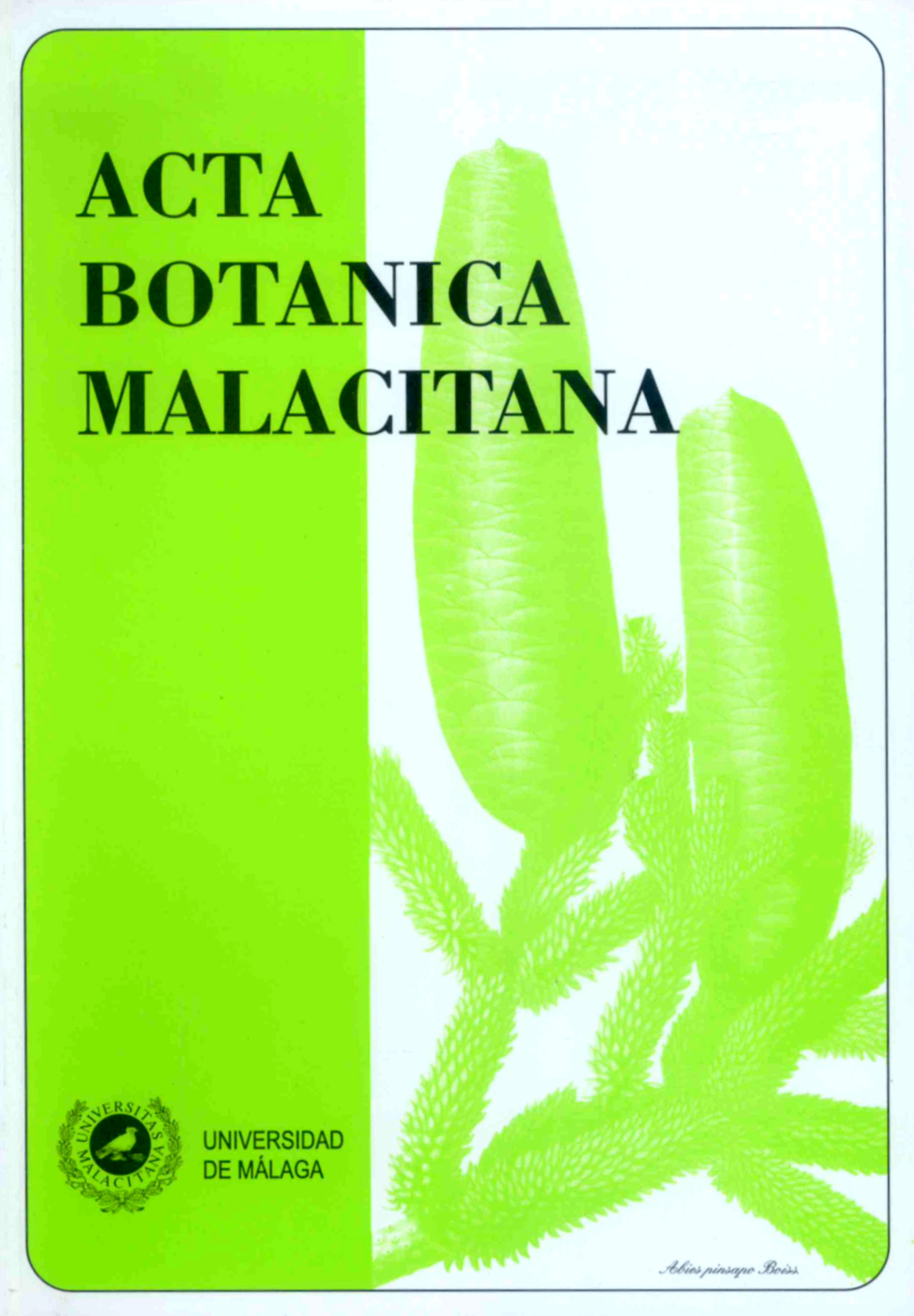Impacto del ozono troposférico sobre la anatomía foliar de Abies pinsapo Boiss. I.: Estudio de la distribución de daños
DOI:
https://doi.org/10.24310/abm.v34i0.6952Abstract
RESUMEN. Impacto del ozono troposférico sobre la anatomía foliar de Abies pinsapo Boiss. I: Estudio de la distribución de daños. Con el fin de elaborar unos criterios unificados para la evaluación del impacto del ozono troposférico y compararlos con la respuesta de las poblaciones naturales de Sierra Bermeja y Sierra de las Nieves, se han reproducido en cámaras Open Top, ambientes filtrados y enriquecidos con ozono para realizar una caracterización microscópica del daño que produce el ozono troposférico sobre Abies pinsapo Boiss. Los resultados demuestran que pese a que la morfología foliar permanece inalterada tras someter durante un mes en condiciones de 30 ppb durante 8 horas al día, a nivel tisular se han producido daños de consideración que afectan de este endemismo.
Palabras clave. Anatomía, Abies pinsapo, ozono, cámaras Open Top.
ABSTRACT. Tropospheric ozone injury on the foliar anatomy of Abies pinsapo Boiss. I: Study of damage distribution. With the aim of develop unified criteria to evaluate the tropospheric ozone injury and compare with responses in Abies pinsapo Boiss. in natural populations in Sierra Bermeja and Sierra de las Nieves, it has been reproduced in Open Top Chambers conditions of filtered air and addition of controlled amounts of ozone. Results show that despite leaf morphology remains unaltered after a treatment with 30 ppb 8 hours per day, at tissue level there have been injuries that affect this endemism.
Key words. Anatomy, Abies pinsapo, ozone, Open Top chambers.
Downloads
Metrics
Downloads
Published
How to Cite
Issue
Section
License
All information related to the licensing of published works in Acta Botanica Malacitana and copyright can be found in our Editorial Policy.







1.png)
